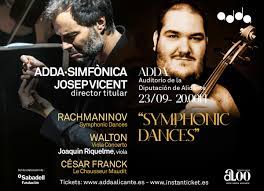Ostensibly an autobiography, El balcón en invierno often feels like a novel, a surreal experience couched in a style that approaches magical realism. Long before we reach the end of the book, its characters have attained for the reader the near mythical status they hold for the book’s narrator, ostensibly a child of the extended family described.
We are pitched into a world of memories. This remembered world is that of a college educated, Madrid resident, mature man, who still wants to be a professional jazz guitarist. Every element of that sought after and pursued identity would have been beyond not only the experience or even capability of the family that raised him, it would be beyond the limits of their encultured imagination. Guitarists certainly existed in this reality, but jazz was recorded music, internationally marketed and reliant upon participation in an economic system that was unknown to this community. It would have been unimaginable for the grandparents, so vividly recalled from the experience of times shared. It’s a measure of how much change can be foisted from outside on a mere generation of human existence that the grandson viewed as normal that which was beyond the imagination of the parents.
The principal character of El balcón en invierno was raised in a rural community in western Spain, near Badajoz in Extremadura, not far from the Portuguese border. The families in that area shared a common approach to life. They were all different, but they were all dependent on a local economy rooted in the soil, in agriculture, in small holdings, in the processing of the products of that soil and the servicing of the needs of the community. Ambition extended only as far as the next village. And it is this all embracing, all encompassing, almost closed, repeated and repetitive way of life that forms the backbone of nostalgia the stiffens the entire book.
But not for this writer the repeated daily responsibilities of chicken coop, the tending of goats, the drawing of water, the pruning of vines, the tethering of cattle, the leading of donkeys. Not for him the preparation of gazpacho, the making of bread, the stirring of an olla bubbling with cocido over a wood fire, the kneading of dough or the grinding of flour. Not for him the cutting or pressing of grapes, the picking of oranges, the drying of tomatoes or figs, nor the harvesting of nisperos. For him, the enduring ambition was to become a jazz guitarist. And that would require visiting a city. A city! A what? And for what would you need all that schooling, all those lessons and exams and prices of paper they call qualifications, when not one of them shows you how to milk a goat, make cheese or butter or press an olive?
And it is this access to schooling, to an education that certainly existed in his grandparents’ time, that truly offered the means of transforming a life and, by accessing it, the process that would end a lifestyle. Schooling was probably a commodity not accessed by grandparents and parents alike, because it could contribute nothing to the necessities of a life that was all demanding in its essential tasks. But, as the schooling also demonstrated, it was also something of a self-reproducing prison, which retained relevance only within its own, shrinking walls. There was a life elsewhere and it was beginning to invade.
In less able hands, the reliving of rural life via nostalgic images could have become a mere romanticized fantasy, a lost imagined ideal world which, in reality, was hard, unforgiving, often short-lived and, when truth be admitted, far from ideal. The reader is often walked through the recalled reality of this existence, but the lists of objects, of foods, of daily tasks might just have been culled from someone else’s nostalgia. But in the hands of Luis Landero, the processing of lists becomes a cultural experience, a filled-out landscape, rather than an ego-trip down memory lane.
El balcón en invierno’s beauty is not in its
sensitivity, its compassion. Its message, however, is that the lives become
what time and circumstance conspire to arrange and that, in the end, we may
idealize only the life we have not lived. The one we have lived, on the other
hand, becomes the mundane, the challenging struggle that life has always been,
even that ideal, remembered, reimagined rural existence for those who lived it.
Read it in Spanish, but ignore the fact that there are many old, archaic words.
Just go with the flow and appreciate the contrast that the author draws between
nostalgic imagination and brutal reality.










